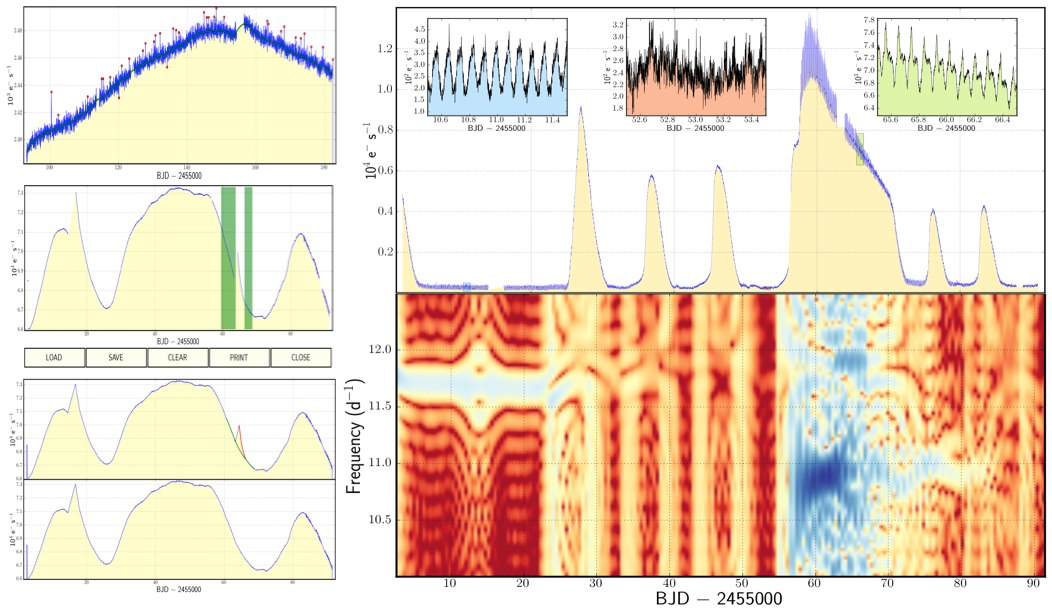|
|
|
||

| |||
|
The Kepler spacecraft,
launched on Mar 6, 2009, monitors photometrically 160,000+ stars with continuous, 30-min or 1-min
sampling. Kepler's primary science objective is transit-driven exoplanet detection with emphasis on
terrestrial, R < 2.5 REarth planets located within the habitable zones of
Sun-like stars. The Kepler Science Center is dedicated to the service of the broad science
community, with a charter to promote the exploitation of Kepler data and broaden
the scientific impact of this mission. Kepler data
provide a unique combination of photometric precision, duration, contiguity and source
volume. The scientific community have opportunities to both develop observing programs and mine
Kepler's rich public data archive.
The community are encouraged to participate in Kepler's primary science and exploit the mission's
unique archive and observing resources to pursue unrelated stellar and extragalactic astrophysics.
|
|||
|
EXAMPLES OF KEPLER QUARTER 2 GUEST OBSERVER
DATA ANALYSIS
|
Kepler Guest Observer Timeline
» Cycle 4 start (Q14): Jun 2012
» Cycle 5 Announcement of Opportunity » Cycle 5 Notice of Intent due Dec 18, 2012 » Cycle 5 Proposals due Jan 18, 2013 » Cycle 5 start (Q18): Jun 2013
Latest Kepler News
|
||||||||||||||||||
Questions concerning Kepler's science opportunities and open programs, public archive or community tools? Contact us via the email address.
